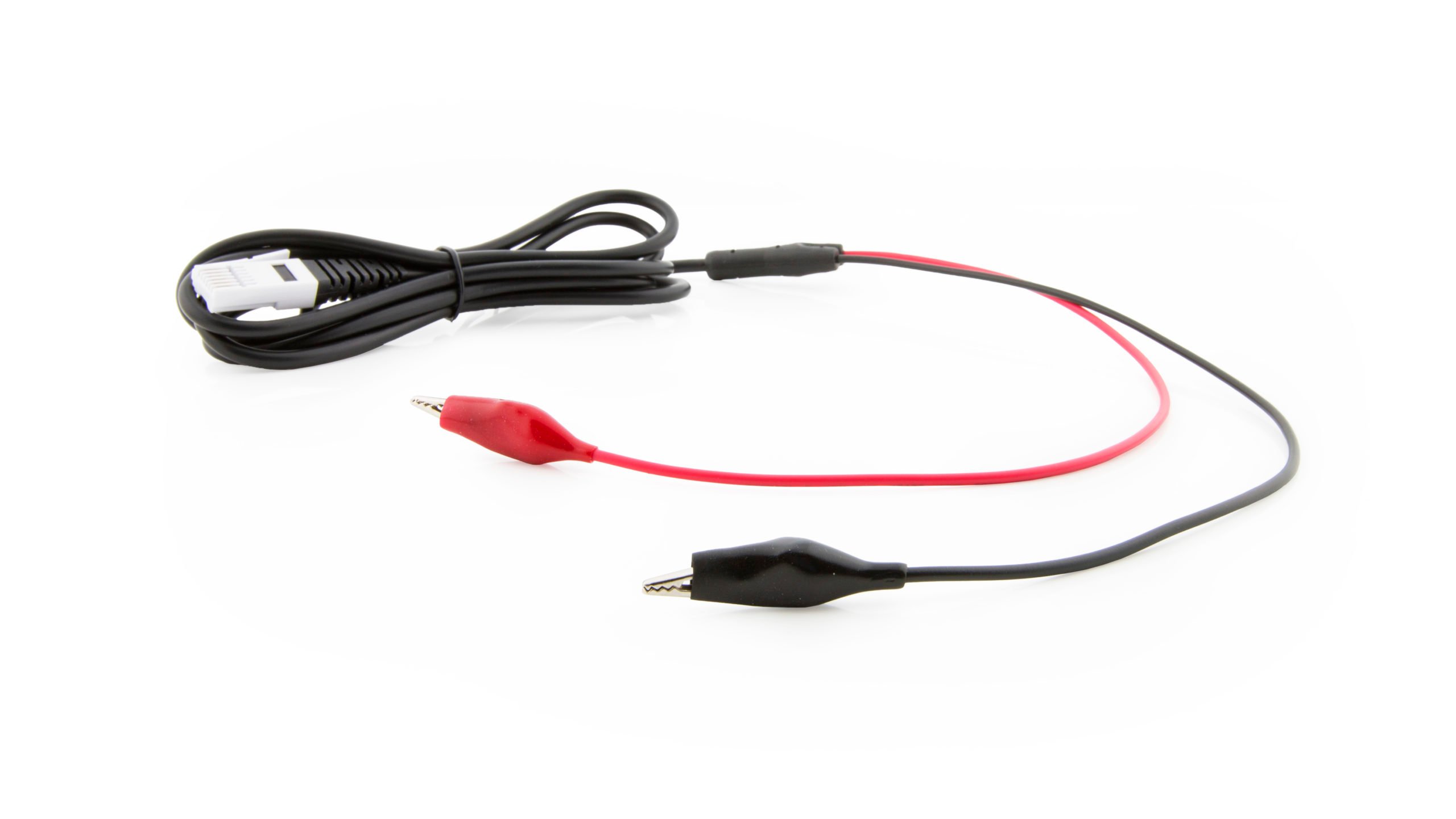Troubleshooting
- Primary Test: Connect the red and black leads properly and securely, according to the experimental setup.
- Secondary Test: If you suspect that the readings are not correct, make sure you have zeroed the probe correctly. To do this, Connect the red and black clips together. Zero the probe in the software. The reading should go to zero. If it does not, the wires may be damaged.
Additional Troubleshooting
- Why are my voltage readings inaccurate when I measure half cells or batteries?
- The readings from my Current and/or Voltage Probe are erratic, but if I measure the voltage with a multimeter instead, I get a solid reading. What is wrong with my sensor?
- What is the difference between a Differential Voltage Probe (DVP-BTA) or Go Direct Voltage Probe (GDX-VOLT) and the simple Voltage Probe (VP-BTA)?
- What is the input impedance of a LabPro voltage probe?
- What is the overvoltage protection on the Differential Voltage Probe and Current Probe?
- Is it possible to use the Voltage Probe (VP-BTA) when doing an Ohm's Law experiment, or is the Differential Voltage Probe (DVP-BTA) or Go Direct Voltage Probe (GDX-VOLT) required?
- An experiment using the current sensor of the power amplifier (PAMP) gives unexpected results
- Why does the 10 V voltage probe not read zero when the clips are disconnected?
- What is the accuracy of a DVP-BTA voltage probe?
- Why does CH4 on LabPro read a different voltage from the others?
Specifications
- Input voltage range: ±10 V
- Input impedance: 1MΩ
Note: the black lead for this sensor is grounded to the interface.
Calibration
No calibration necessary. However, the probe will need to be zeroed.
See also, Why does the 10 V voltage probe not read zero when the clips are disconnected?.
Related Products
- Vernier Circuit Board 2 (
VCB2 ) - Current Probe (
DCP-BTA ) - Differential Voltage Probe (
DVP-BTA ) - Instrumentation Amplifier (
INA-BTA ) - 30-Volt Voltage Probe (
30V-BTA ) - Go Direct® Voltage Probe (
GDX-VOLT )

